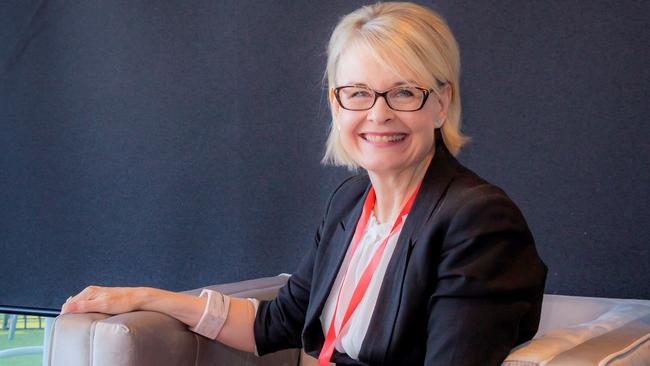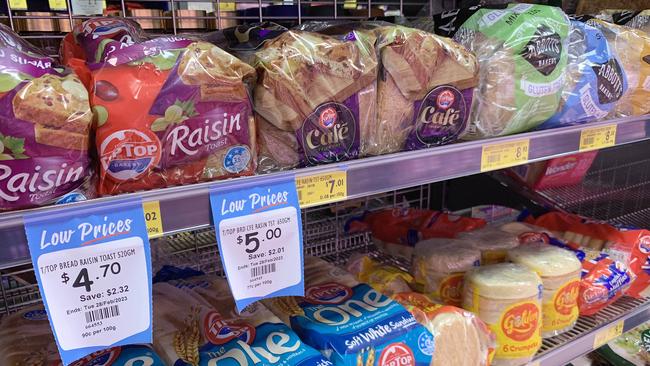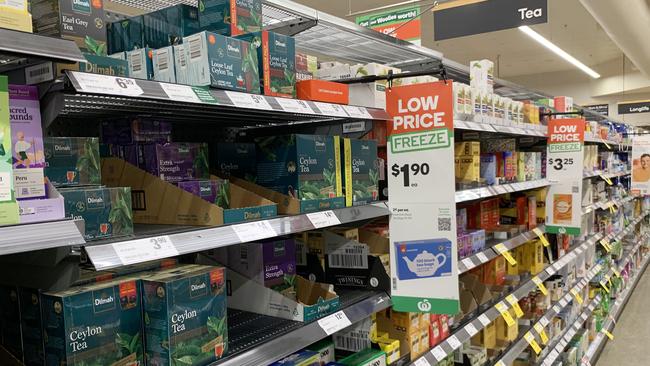Families going without food, medication as cost of living crisis cuts deep
Families crippled by Australia’s cost of living crisis are making huge sacrifices to keep a roof over their heads.

Costs
Don't miss out on the headlines from Costs. Followed categories will be added to My News.
Families crippled by the ongoing cost of living crisis are sacrificing meals and access to medication in order to save on costs, experts have revealed.
The head of NSW’s peak community sector body says the escalating prices in food, fuel and energy are creating a “perfect storm”, as research suggests rent and house price rises are driving up rates of homelessness.
A report from community support group Launch Housing found the number of people using a specialist homeless service (SHS) has grown by 8 per cent in the last 4-5 years.
Those figures are outpacing the rate new households are being built each year.
NSW Council of Social Service (NCOSS), the peak body for the community sector in the state, says frontline organisations are being inundated with requests for help in the aftermath of the Covid-19 pandemic, flooding and rising general costs.
CEO Joanna Quilty told NCA NewsWire frontline workers with organisations like Foodbank had reported half the people coming for food relief were “working families” who couldn’t afford to put food on the table.

“Demand is skyrocketing,” Ms Quilty warned.
“It’s a particularly difficult time with stagnant wages, the pandemic and people migrating to regional areas or outside of Sydney.”
Ms Quilty said the rising prices of food, energy and fuel, along with cheaper housing on the outskirts of Sydney being taken up, was “pushing so many people against the wall”.
She said people were disclosing to frontline support workers they were going without access to medication or medical care because they “just couldn’t afford it”.
Young people had also disclosed they were going without food.
“Working families are feeling the stress and strain,” Ms Quilty said.
“It feels like it’s a perfect storm.”

A separate poll conducted by the Australian Council of Trade Unions (ACTU) found 24 per cent of Australians had been skipping meals due to the cost of living crisis.
56 per cent of the 3000 respondents had cut back on essential items, while 21 per cent had sold assets.
ACTU secretary Sally McManus attributed the grim figures to years of low-wage growth and recent cuts to wages.
“A quarter of Australians cannot afford enough food for three meals a day,” she said in December.
“This is a crisis which requires a systemic response - we need to fix our broken workplace laws and rethink how our financial institutions, like the RBA, combat inflation and protect the interests of working people.”
When asked what needed to be done to improve the cost of living situation, Ms Quilty said increases to support payments like JobSeeker and Youth Allowance would provide some level of support for people below the poverty line.

She also supported better investments in social housing to affirm “more secure and stable” forms of accommodation.
Last month, the Australian Homelessness Monitor revealed rising rates of homelessness continue to outstrip the growing population.
Launch Housing’s report found the average monthly number of people using a specialist homeless services (SHS) across Australia grew from 84,800 people in 2017-18 to 91,300 in 2021-22.
That number is an 8 per cent increase on figures in just over four years.
“Homelessness policies and services have been profoundly affected by the COVID-19 crisis that exploded in 2020,” the report states.
“This prompted extraordinary support activity for people experiencing homelessness early in the pandemic.”
Alarmingly, there was a 22 per cent increase in the number of homeless people in Queensland.
The report attributes housing affordability as one of the fastest growing causes for homelessness; almost a third (27 per cent) of people surveyed said this triggered their need to seek SHS’.

One email from a Queensland real estate agency encapsulates the dire housing crisis after more than 100 groups booked to inspect a two bedroom unit in Brisbane.
The email, sent by Vine Property Agents, said the asking rent would be increased by $25 per week – $1300 per year – to $495 amid “overwhelming demand” for the property.
“The volume of interest indicates we may have priced the property incorrectly. We therefore have to cancel the inspection…” the email reads.
In Sydney, the situation fares no better.
A PropTrack Market Insight found the median rental price in Sydney now sits around $560 per week - a record high for prices in the capital, realestate.com.au reports.
“The moderation in rental price growth will be something to watch over the coming year. Demand for rental stock remains heightened and supply continues to be limited, however rental vacancy rates have steadied over recent months,” PropTrack director of economic research and report author Cameron Kusher said.

Data from the Australian Bureau of Statistics (ABS) reveals the weight for the Consumer Price Index (CPI) across a range of categories changed over last year.
The weight for food and non-alcoholic drinks increased by 0.42 percentage points (pp) in 2022 due to higher spending at restaurants and cafes when Covid-19 restrictions were lifted.
Restaurant meals as a result increased by 0.54pp to 3.96 per cent, an ABS spokesman said.
The data table reveals the weight for rents fell due to the increase in expenditure being less than the increase in total expenditure.
“Over this period there was a relatively small increase in both the number of dwellings rented and rent prices,” the ABS spokesman said.
“The weight for electricity fell due to lower electricity consumption and the introduction of rebates in some states and territories having a temporary impact on prices.”
The December quarter CPI will be released on January 25.
Originally published as Families going without food, medication as cost of living crisis cuts deep



